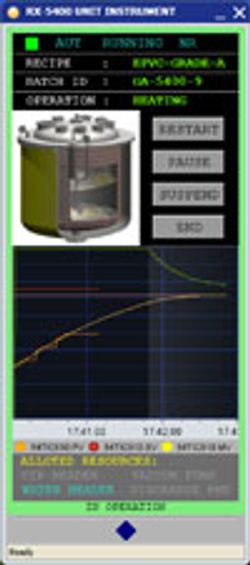Dispensing Biopharmaceuticals with Piston and Peristaltic Pumps
Equipment and Processing Report
Piston pumps have been a traditional liquid-filling technology for biopharmaceutical manufacturers, but new challenges, stricter validation requirements, and design innovations have led manufacturers to consider peristaltic filling technology.
Pharmaceutical companies show increasing interest in developing biopharmaceutical products, and observers believe these products could represent the industry’s future. Because most large-molecule drugs are delivered by injection, they require aseptic liquid processing and fill–finish operations. Piston pumps have been a traditional liquid-filling technology, but new challenges, stricter validation requirements, and design innovations have led manufacturers to consider peristaltic filling technology.
A piston pump is a mechanical device that cycles through a suction phase and a pressure phase to move fluid. A peristaltic pump continuously applies external pressure to a silicone tube to move fluid. Internal parts of a piston pump (e.g., gaskets, seals, valves, and internal surfaces) are in direct contact with the fluid. The peristaltic pump contains the fluid or product inside the pharmaceutical-grade tubing, which is the only part in contact with the fluid. For this reason, peristaltic pumps can be used for single-use aseptic filling. Single-use fluid paths eliminate the risk of cross-contamination between batches (see Figure 1).
Piston pumps are well-established and popular in all areas of a biopharmaceutical facility. Peristaltic pumps are convenient and often the preferred choice for fluid transfers in laboratory environments. They are now regularly used instead of piston pumps in small- to large-scale production applications.
Piston pumps
Piston pumps and other mechanical pumping devices such as time or pressure filling systems are known for their reliability and accuracy. On the other hand, they require regular maintenance and disassembly for cleaning and sterilizing. In addition, cross-contamination between batches is a big concern for piston pumps during the filling of biological drugs. Therefore, multiple piston sets need to be managed: one for each injectable drug being filled.
Peristaltic pumps
High-end peristaltic dispensing pumps have benefited from improved pulsation-free pump head design, a precise drive motor, and a state-of-the-art calibration algorithm. They are exceptionally accurate at microliter fill volumes.
Peristaltic pumps offer several benefits over piston pumps. For example, if an operator changes a peristaltic pump’s tubing size, then the pump can fill 0.1–250 mL. Several piston pumps would be required to achieve a similar fill range.
Peristaltic pumps that incorporate single-use tubing eliminate cross-contamination and do not require cleaning because the tubing is the only product-contact part. Likewise, the cleaning validation of peristaltic pumps with single-use tubing is significantly easier than for piston pumps. The cost of labor and supplies for writing and executing protocols, cleaning, and documenting the cleaning process is higher for a multiple-use piston-pump filling system.
Adjusting the flow speed, and therefore preventing foaming or splashing, is easier for a peristaltic pump than for a piston pump. Operators can also use a ramp-up and ramp-down feature to determine how fast a peristaltic pump reaches its fill speed. This option helps optimize overall fill time and increase throughput.
Many biological drugs are shear-sensitive, and peristaltic pumps protect them by applying low pressure and providing gentle handling. In contrast, a piston pump’s valve system generates fast flow through small orifices, potentially damaging biological products. Even valveless piston pumps apply high pressures and high shear factors that could harm a biological product.
Peristaltic pumps operate as quickly as piston pumps. Piston pumps must cycle through a recovery or suction phase between each dispensing stroke, but peristaltic pumps require no downtime. In addition, some peristaltic dispensing pumps operate at high speeds to minimize fill time. It is common for a filling line of peristaltic pumps to dispense more than 400 bottles/min.
On the other hand, viscous products can be problematic for peristaltic pumps. The pumps apply only approximately 1.3 bar of pressure, and their accuracy suffers when they handle products more viscous than 100 cP. Piston pumps, which generate greater pressure, handle products more viscous than 100 cP. Biopharmaceutical products are mainly aqueous, however, and so the viscosity limitation does not usually affect peristaltic pumps.
Conclusion
Because of recent technological advancements, peristaltic dispensing pumps now offer filling speed and accuracy that is comparable to those of piston pumps. Peristaltic pumps also accommodate single-use fluid paths, and single-use filling is becoming a must for cost-efficient biopharmaceutical drug development and production. For these reasons, biopharmaceutical manufacturers see peristaltic pumps as a good option for dispensing applications.
Peter Lambert is the filling-division manager for Watson-Marlow Flexicon, 37 Upton Dr., Wilmington, MA 01887, tel. 800.282.8823, [email protected]


